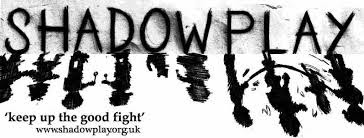A tour with indie pop stars Allo Darlin' has inspired The Wave Pictures' new album City Forgiveness. ShadowPlay caught up with frontman David Tattersall to discuss the album and the band's future.
If a decade of being told his voice is a dead ringer for Modern Lovers singer Jonathan Richman is wearing, then Wave Pictures frontman David Tattersall doesn't show it. The likeable songwriter cites Richman's 2008 album 'Because Her Beauty Is Raw and Wild' as a key influence to new album City Forgiveness, along with Rory Gallagher, Neil Young and rumba singer Franco and the OK Jazz.
 |
| David Tattersall |
But there's one key influence on the latest LP from the prolific trio - Allo Darlin'. The Fortuna Pop outfit accompanied the Wave Pictures on a six week tour of the US last year and double album City Forgiveness is the result of the trip. "The best thing about that tour was that we all became friends. The highs would be hanging out and drinking tequila and playing frisbee. The lows would be driving nine hours a day in the hot sun," Tattersall explains.
Release on hip London label Moshi Moshi on October 21, the record will be eagerly anticipated by the band's unique and oft-obsessive fan base. "We think it's the best thing we've ever done! We're very happy with it," explains Tattersall. "We have great special guests on there: Paul Rains from Allo Darlin, Stanley Brinks and others. And we've got a deep, rich sound that we never had before. The album has more tones and colours than on our previous efforts, more life, more energy."
If single The Woods is a marker than that description is more than accurate. A live version of the track recorded seminal east London studio Toe Rag shows Tattersall's trademark off beat lyrics ("I have unattractive nurses in my dreams/ stacked low like pancakes") married to an infectious relentless dirty rhythm to give a performance as good as any the band have ever put in.
"It was really really fun," Tattersall says of the Toe Rag session. "We certainly enjoyed the analogue aspect of the studio, the absence of a computer was delightful. I don't like computers much to be honest and I try to avoid them for the most part."
 |
| New album City Forgiveness |
Formed in the East Midlands in the late 1990s, The Wave Pictures - Tattersall, bassist Franic Rozycki and Jonny Helm - have progressed to become royalty in the anti-folk scened finding fans and collaborators in comic supremo Jeffrey Lewis, Mountain Goats frontman John Darnielle and Swedish folk legends Herman Dune among others.
"We've been lucky right from the start with all the wonderful people that we have worked with. I remember hearing Jeff Lewis on John Peel when I was a teenager living in the East Midlands at my parents house," says Tattersall. "I thought his songs were incredible then and I still do now, and we've been friends for ten years and Franic played mandolin on his last album.
"I was uplifted by playing with Daniel Johnston: his songs really cheered me up and made me happy."
The Wave Pictures are one of the hardest working bands in the UK and their staggeringly prolific output has seen the trio release approaching 20 albums as well as solo projects and spin offs. Their tales of marmalade statues and avocado babies have combined with electric tunes like Jimmy Reed and Just Like a Drummer to retain a buzz around the band. Regular tours around the UK, US and Paris include headline slots in New York, a forthcoming gig at the Jazz Cafe in Camden on November 13 and the band even played ShadowPlay's first gig on a snowy night in Sheffield in 2006.
But does the relentless recording and touring ever get too much? "It certainly can be a struggle at times. But we've stayed true to the way we think things should be done. And so we're happy and enjoy what we're doing," Tattersall says.
"Nevertheless, we travel a lot and work hard and it can be a struggle to deal with all the opinions and criticisms that you get and all the indifference too, and all the while you know that the last thing the world needs is another band.
He adds: "But the secret, I suppose, is to focus on the job at hand and try to disregard everything else that goes along with it. We get along with each other, and we love music, and that helps a lot."
Conviviality then, may be the key, but a heap of energy and a fistful of inventive tunes will doubtless keep the Wave Pictures on top too.









